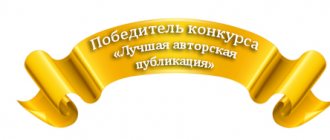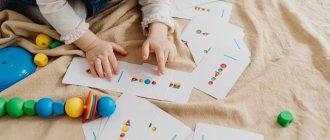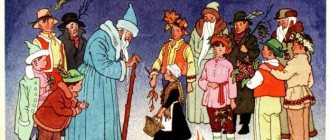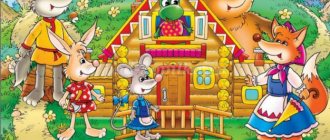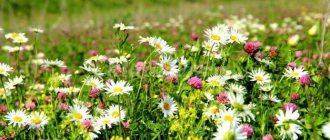Publications on speech therapy
Speech therapist Natalya Anatolyevna Zorina, Chelyabinsk
Correctional educational goals:
• Consolidation in speech of nouns with a general meaning of body and face parts. • Clarification and expansion of vocabulary on the topic:
Nouns: neck, leg, arm, hand, face, mouth, nose, eyebrows, tongue, bones, thermometer, medicines, doctor, exercises. Verbs: breathe, look, walk, hear, run, jump, frown, hurt, heal, see. Adjectives: brown, pink, blue, left, right, healthy, strong, brown-eyed, green-eyed, large-mouthed.. Multiple meanings: leg, nose, hand, bone. Synonyms: doctor, doctor. • Continue to teach understanding the meaning of sayings. • Practice previously covered grammatical categories (formation of plural nouns; selection of the pronoun my-moi to a noun; formation of the diminutive form of words: forehead, nose, mouth, beard, cheeks. • Develop practical word formation skills. • Strengthen the skills of pronouncing words with complex sounds -syllable structure. • Mastering the skills of composing complex sentences on questions, based on plot pictures. • Developing the skills of coherent speech. • Consolidating knowledge about parts of the body and face.
Corrective and developmental goals:
• Develop and activate auditory and visual attention, auditory and visual memory. • Develop articulatory motor skills. • Develop fine motor skills of preschoolers' hands. • Reinforce sensory skills. • Develop mental activity, the ability to observe and comprehend objects and phenomena of the surrounding reality. • Include jobs that rely on multiple analyzers. • Pay attention to learning motivation.
Correctional and educational goals:
• To form children's ideas about the dependence of health on physical activity. • Build collaboration skills. • Develop control and self-control skills.
Preliminary work.
1. Target walk: to the nurse’s office. 2. Role-playing game “Hospital”. 3. Development of raising the tongue upward. 4. Classification of parts of the body and face. 5. Didactic game “One - many”. 6. Recommendations for parents to consolidate vocabulary on the topic.
Equipment.
1. Doctor Thermometer toy.
2. Individual mirrors. 3. Vitamins blue, pink, brown. 4. Subject and plot pictures. 5. Board. PROGRESS OF THE LESSON 1. Organizational moment.
(Formation of the ability to observe and comprehend objects and phenomena of the surrounding reality. Continue to teach to understand the meaning of sayings.) - Hello, guys! Today only the one who answers my questions correctly will come to play with me. Look at the pictures and say what the person and the person have in common: a table, a door, grapes, a ship. (Legs, arm, bones, nose). - Well done. Guys, we have so many guests, let’s come and say hello. (Children say hello). You know, you didn’t just say hello, you gave each other a piece of health because you said: Hello! I wish you good health! No wonder the Russian folk proverb says: “If you don’t say hello, you won’t get health.”
2. Development of fine motor skills.
– Today, Doctor Thermometer, already familiar to you, came to us. He accidentally spilled his vitamins. Let's help him collect vitamins. Sasha will collect pink vitamins into pink cells, Dima will collect blue vitamins into blue cells, Andrey will collect brown vitamins into brown cells. (Children complete the task.) Individual approach: children with well-developed motor skills are offered smaller cells. Each child is given the color of “vitamins” that he confuses or does not know. As the task progresses, the speech therapist asks the children: “What are vitamins for?” - Guys, what is a thermometer for?
3. Articulation gymnastics.
(2-3 min.) (Maintaining the correct working posture. Developing an upward movement of the tongue, developing the ability to make the tip of the tongue tense.)
– The state of health can be determined not only by body temperature, but also by your tongue. Sit down at your desks. Check your posture: backs - pictures, legs - paths. Take the mirrors and show off your tongues with a “Spatula”
.
– Your tongues are pink and healthy, which means they are strong. Let's show the Doctor how strong your tongues are. Let's remember the exercise “Drummers”
. Smile, open your mouth and tap the tip of your tongue behind your upper teeth, pronouncing the sound “d” repeatedly and clearly. At first the sound is pronounced slowly, then accelerated.
4. Exercise “Guess what’s under the curtain”
. (Developing the correct speech exhalation. Reinforcing the names of colors: pink, blue, brown.) – Move aside the mirrors. Look what Doctor Thermometer brought you. The speech therapist gives the children cards with pasted images of parts of the face placed under the “curtain.” – Guys, let’s blow and see what pictures Doctor Thermometer hid under the “curtains.” Name your pictures. (Children say: “I have a mouth, nose, eyebrows under the pink curtain.”) The speech therapist names his image, adding the word “my cheek.” Sasha, whose nose do you have?” Children answer the speech therapist’s question “whose,” adding the words “my—mine.” (My nose, my mouth, my eyebrows).
5. Game “What are we doing with what?”
(Working on verb vocabulary on the topic. Consolidating the general word “parts of the face.”) - Please tell me what we can do with our nose? (We breathe through our nose). (We hear with our ears, we see with our eyes, we eat with our mouth, we frown with our eyebrows, we smile with our lips) - How can you call it in one word: nose, chin, lips, eyes...? (Parts of the face).
6. Facial massage.
- Let's remember the poem about our face:
(Children perform tapping movements on the named parts of the face.)
The face is a house.
The roof is our forehead. Windows are eyes. Cheek - wall. The beard is our gender, and the mouth is our table. (Children perform stroking movements on the called parts of the face.)
We will wash the roof. We'll wipe the windows, and paint the walls, and sweep the floor. Let's wipe down the table. Our beautiful home!
6. Ball game “One - many”.
(Formation of the plural of nouns in the genitive case.) The speech therapist suggests playing with a ball. - Guys, I have one nose. How can you say it in one word if there are many of them? Do we have a lot of things? (Lots of noses). Now let's play with the ball. The speech therapist names the part of the face and throws the ball, and the children name the multiple part and throw the ball back to the speech therapist. (Ear - ears, chin - chins, face - faces, mouth - mouths)
7. Game “Chest of Amazement”.
(Formation of complex words. Replenishing the dictionary with the word brown-eyed.) The speech therapist leads the children to the “chest of amazement.” – Whoever is the most attentive will answer the question, what do we call a person with a big mouth? (Large Mouth). ... with green eyes? (Green-eyed). - The word is difficult. Let's repeat it again. And our palms will help us with this. (Children pronounce the word by clapping it.) Formation of a compound word: brown-eyed. The speech therapist explains that a person with brown eyes is called brown-eyed.
7. Collecting a cut-out picture of Neboleikin’s man.
(An exercise to develop visual gnosis with elements of control over your own actions and the actions of your comrades. Development of fine motor skills.) - We completely forgot about Doctor Thermometer, but he wanted to introduce you to his friend Neboleikin. Neboleikin loves to engage in physical education and sports. This means that the one who quickly and correctly assembles Neboleikin’s photograph will go do exercises. While the children are collecting the picture, the speech therapist asks why they need to do exercises. (To be healthy and strong.) - Where is our strength? (In the muscles.) (Children collect a cut-out picture, and then go out onto the carpet for sports exercises.)
8. Physical exercise.
(Prevention of fatigue and overwork.) And now everything is in order. Let's get up together for exercise! Arms to the sides, bent. They raised it up and waved. We stood up on our tiptoes and lowered our hands down. They sat down together, their heels touched... Girls and boys Jumping like balls.
- Well done! Praise yourself: hug yourself with your right arm over your left shoulder, and stroke your head with your left hand.
9. Didactic game “4th extra”.
(Development of the ability to classify objects. Consolidation of the general concepts of “parts of the body” and “parts of the face.”) The speech therapist suggests looking at the pictures and guessing what is superfluous here and why? Pictures are hung on the board: mouth, nose, hand, forehead.). The extra picture is a hand. The hand is part of the body, and the rest of the pictures are parts of the face. – What other parts of the body do you know? (Children's answers.)
10. Didactic game “Why do people need body parts?”
(Compiling complex sentences based on plot pictures.) Then the speech therapist shows the children plot pictures and asks them to compose a sentence. For example: A person needs legs to walk down the street. (A person needs hands to wash dishes, pet a cat, play the piano...)
11. A story with elements of reflection “Eva the Doctor.”
– Today we spend the entire lesson talking about parts of the human body.
And who can we turn to for help if something hurts us? (To the doctor.) - What other word can you call a doctor? (Doctor.) - What is the main job of a doctor? (The main job of a doctor is to cure the patient.) - Remember, guys, how you played “hospital” in a group? (Yes.) On the same day, our Eva was given the game “Aibolit” at home. The speech therapist, attaching pictures to the board from top to bottom, one under the other, continues to tell the text: Eva was given the game “Aibolit.”
There were bandages, cotton wool, a thermometer, and syringes for injections. And now Eva plays hospital every day. In this hospital, she is a doctor, and her toys are sick. Eva puts them on the sofa and puts them on a thermometer and gives them medicine. Eva also wanted to treat her grandfather. But for some reason he went to a real doctor. Why do you think? Pointing to each picture in turn, the speech therapist asks you to remember what was said in each sentence. Then the children retell the entire text in a chain. At the end of the retelling, the speech therapist turns the pictures over one by one and invites one of the children to reproduce the content of the story.
12. Reflection.
– What did you enjoy doing most? - Why did we do this? – Was it difficult for you? (The speech therapist evaluates the children’s work.) - Doctor Gradusnik and I wish you good health. These health vitamins will help you never get sick. (The speech therapist gives children “health vitamins” from Doctor Thermometer.)
https://logopediya.com/public/
